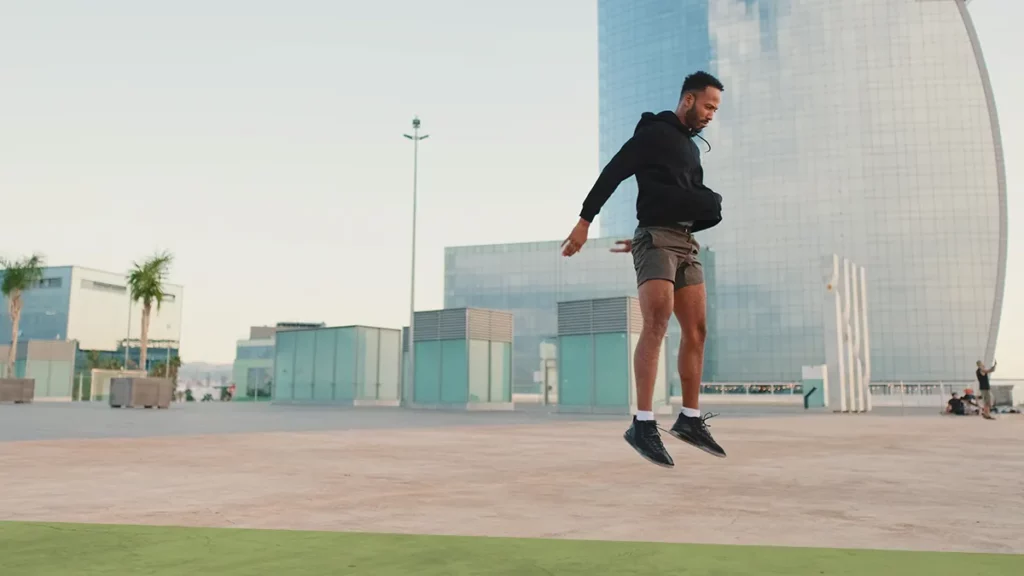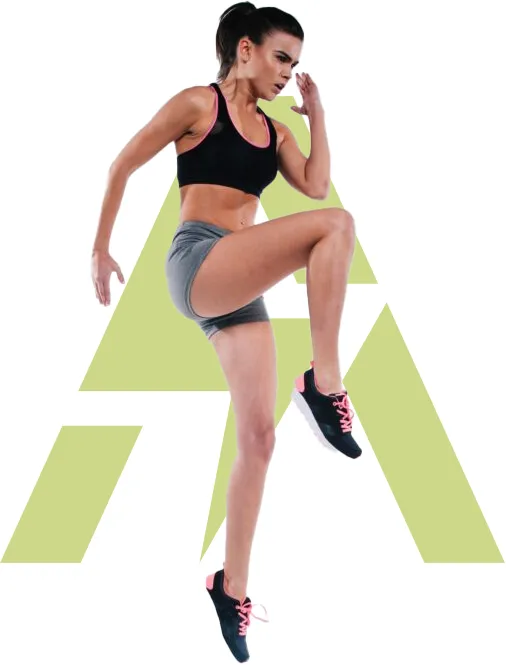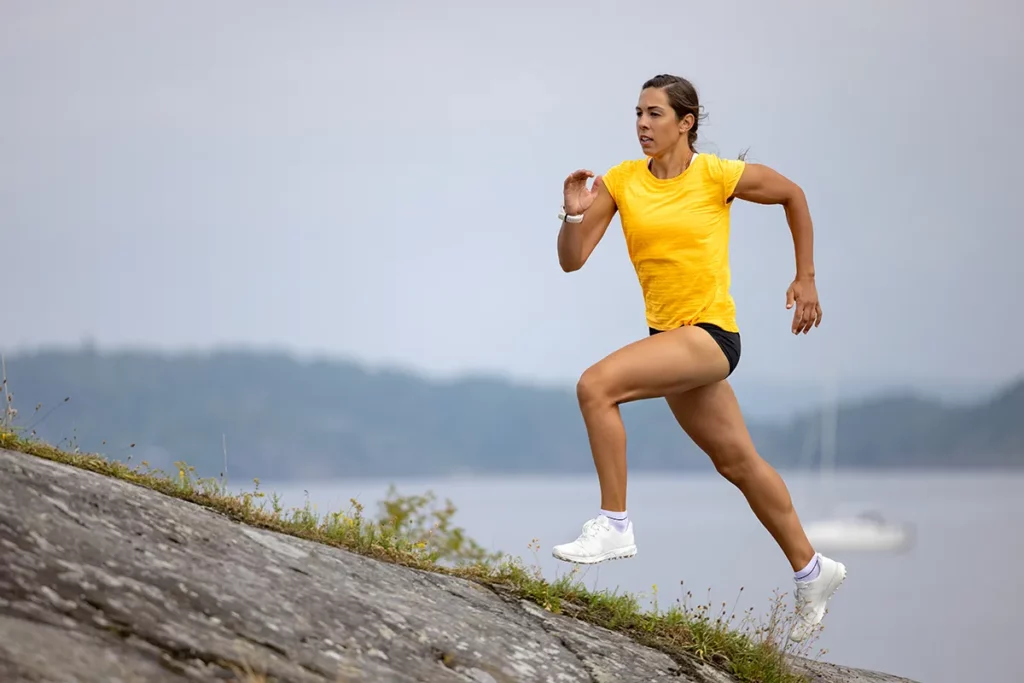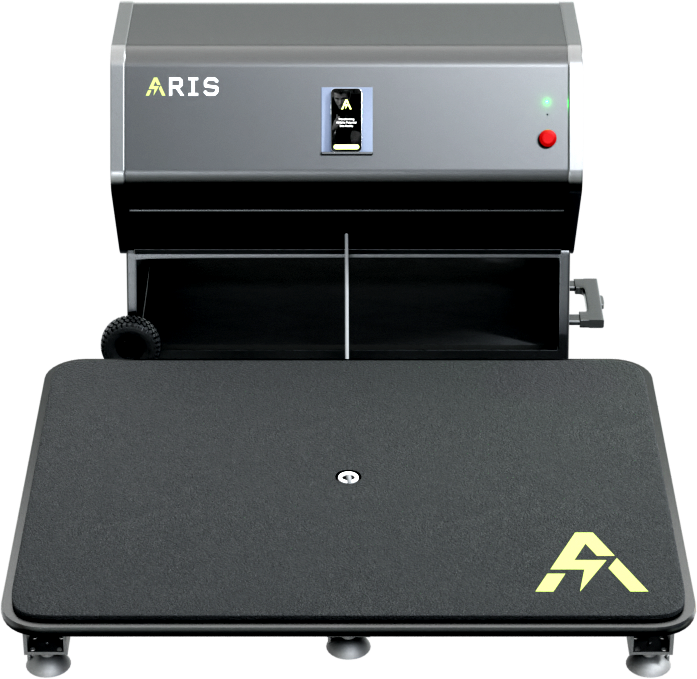10 Dynamic Basketball Jumping Drills to Amplify Your Vertical Leap

Mack-daddy will make you jump, but he never said how high. That part is up to you – and if you aren’t actively working on amplifying your vertical leap, you won’t ever get high off the ground. This is why plyometric training is essential to jumping higher.
All athletes can benefit from strength training and plyometric exercise. Volleyball players need that vertical jump to spike a ball on the opposing team, wide receivers need to reach high for the ball, and it’s no contest that track-and-field athletes in broad-jump meets need to jump high and broad. However, no vertical jump is more impressive than the one that sets a ball on fire – the dunk.
According to this dunk calculator, an athlete that is 6 feet tall needs at least a 24-inch vertical jump to touch the rim of a basketball hoop. When you take in the additional 6 inches that is required to get the ball over the rim, the minimum jump height would be 30 inches! This means if you have the ambition to dunk like LeBron, you need to get to get to work with some vertical exercises and fill your days with plyometric workouts for vertical jump improvement.
We can’t make your dreams happen – that work is on you. However, we can give you a few of the best exercises for vertical jump workouts for basketball.
Basketball Drills to Increase Vertical Jump
If you want to know how to increase vertical jump for dunking, there’s a simple answer. Jump with intention. However, just jumping is only going to get you only so far. There are more than enough high jump workouts and other drills to improve your vertical jump to fill out an entire book, let alone a single blog post. But books don’t have badass videos like we do to guide you along.
Let’s jump in – get it?
10 of the Best Drills to Increase Vertical Jump
Jump Squats

Jump squats are an effective plyometric exercise that can significantly improve your vertical jump. By combining the explosive power of a squat with a vertical jump, jump squats engage the muscles responsible for jumping and enhance their strength and power.
This exercise primarily targets the quadriceps, hamstrings, glutes, and calves, which are essential muscle groups for generating upward force. The rapid, forceful movement during jump squats helps build muscle fibers and improves the efficiency of neuromuscular coordination, allowing you to generate more power and lift off the ground with greater force. These are a real burner, but one one of the best jumping drills to increase your vertical leap.
How to do Jump Squats
- Stand with your feet shoulder-width apart, keeping your back straight and your chest up.
- Lower your body into a squat position by bending your knees and pushing your hips back as if you are sitting on an imaginary chair. Ensure that your knees are in line with your toes and your thighs are parallel to the ground.
- As you reach the bottom of the squat, explode upward by pushing through your heels and engaging your leg muscles.
- Propel yourself off the ground, extending your hips and knees fully, and straightening your ankles to jump as high as possible.
- While in mid-air, swing your arms to help generate upward momentum.
- As you land, focus on landing softly and quietly to minimize the impact on your joints. Bend your knees to absorb the impact.
- Immediately go into the next repetition by transitioning smoothly from the landing into the next squat position.
- Repeat the movement for the desired number of repetitions, maintaining proper form and control throughout the exercise.
One-Leg Jump

One-leg jumps, also known as single-leg jumps, are a fantastic plyometric exercise that can notably enhance your vertical jump. By training with a single leg, you isolate and strengthen the muscles responsible for explosive upward force, particularly the quadriceps, hamstrings, glutes, and calf muscles. The unilateral nature of one-leg jumps demands greater stabilization and balance, activating your core and lower body stabilizers.
Over time, this exercise builds power and increases the force your leg can generate, leading to significant gains in your vertical jump height and overall jumping performance. Additionally, one-leg jumps can help address any muscular imbalances between your legs, promoting symmetry and reducing the risk of injury in both sports and everyday activities.
How to do One-Leg Jumps
- Stand on one leg with your knee slightly bent. The other leg should be lifted a few inches off the ground, keeping it straight.
- Position your arms to the sides, slightly bent at the elbows for balance and stability.
- Lower your body into a partial squat on the standing leg by bending your knee and pushing your hips back.
- Explosively push off the ground with your standing leg, extending your hip and knee fully to jump upward.
- As you jump, swing your arms upward to help generate additional momentum.
- While in mid-air, keep your lifted leg extended forward to maintain balance and control.
- Land softly and quietly on the same leg you jumped with, bending your knee to absorb the impact.
- Maintain your balance and stability as you land, keeping your core engaged to control the movement.
- Immediately go into the next repetition by transitioning smoothly from the landing into the next one-leg squat position.
- Perform the desired number of repetitions on one leg before switching to the other leg.
Wall Sit

Wall sits are an isometric exercise that targets the quadriceps, hamstrings, and glutes. By holding a static squat position against the wall, you build strength and endurance in the lower body muscles. The increased lower body strength developed through wall sits contributes to more powerful leg drive, which is crucial for generating explosive force during a vertical jump.
How to do a Wall Sit
- Find an open wall space and stand with your back against the wall.
- Slowly slide your back down the wall as you bend your knees, making sure your feet are shoulder-width apart and your back is flat against the wall.
- Adjust your feet position if necessary so that your knees are directly above your ankles when you are in a seated position.
- Your thighs should be parallel to the ground, creating a 90-degree angle at your knees.
- Distribute your weight evenly through your heels and keep your entire back and head against the wall for support.
- Engage your core muscles to maintain stability and keep your lower back pressed against the wall.
- Hold this position for the desired duration, aiming for at least 30 seconds to start with and gradually increasing the time as you build strength and endurance.
- Breathe steadily throughout the exercise, avoiding shallow breathing.
- To come out of the wall sit, push through your heels and slowly slide your back up the wall to a standing position.
Double Tap
Double taps combine quick jumps with mid-air thigh taps. This exercise emphasizes fast-twitch muscle fibers and explosive power in the legs. By repeatedly engaging the muscles to perform rapid jumps and taps, you enhance the muscle’s ability to contract rapidly, which directly translates to improved vertical jumping capabilities.
How to do Double Taps
- Stand with your feet shoulder-width apart and your knees slightly bent.
- Perform a quick, explosive jump off the ground.
- While in mid-air, tap your thighs with your hands twice (double tap).
- Land softly with your knees slightly bent to absorb the impact.
- Repeat the movement, aiming for quick and light double taps while jumping.
Cross Jumps
Cross jumps involve crossing the legs and arms while jumping, challenging coordination and proprioception. This exercise improves agility, explosiveness, and leg strength, contributing to a more powerful and controlled vertical jump. The dynamic movement and quick direction changes help train the muscles to react swiftly and efficiently, promoting better jumping performance.
How to do Cross Jumps
- Stand with your feet shoulder-width apart and your arms by your sides.
- Jump off the ground and simultaneously cross your right leg in front of your left leg while crossing your right arm over your left arm in front of your body.
- Quickly reverse the motion by jumping again and crossing your left leg in front of your right leg, crossing your left arm over your right arm in front of your body.
- Continue jumping and crossing your legs and arms in an alternating pattern.
Uphill Sprints

Uphill Sprints are an uphill version of the traditional plyometric exercise. Running or bounding uphill requires greater force production, activating the leg muscles intensely. By practicing uphill sprints, you target the muscles necessary for explosive leg drive, allowing you to generate more power and height during a vertical jump.
How to do Uphill Sprints
- Find a steep incline or hill with a clear path and enough space for sprinting safely.
- Begin with a dynamic warm-up, including jogging, leg swings, and hip circles, to prepare your muscles for the intense effort.
- Position yourself at the bottom of the hill with your feet shoulder-width apart and your body relaxed.
- When ready, explode into a sprint, driving your knees and pumping your arms to generate maximum power.
- Focus on taking short, powerful strides and keeping an upright posture throughout the sprint.
- Push off the ground forcefully with each step, propelling yourself uphill using the balls of your feet.
- Maintain a steady and controlled pace as you ascend the hill, avoiding overstriding or leaning too far forward.
- As you reach the top of the hill, gradually decelerate and come to a stop safely.
- Walk back down the hill to recover and catch your breath before performing the next uphill sprint.
- Repeat the uphill sprints for the desired number of repetitions, ensuring you maintain proper form and effort with each sprint.
- Cool down with light jogging or walking and perform static stretches for your lower body muscles to promote flexibility and prevent muscle tightness.
- Additional Tip: You can use the ArisPro to add up to 25 yards of resistance and AI machine learning – a first of its kind for speed training machines.
Overhead Reaching Jump
Overhead reaching jumps combine the explosive power of jumping with the added challenge of reaching overhead. This exercise strengthens the entire lower body and engages the upper body, promoting full-body power generation. The explosive upward motion, combined with reaching overhead, encourages greater vertical lift and increased jump height.
How to do Overhead Reaching Jumps
- Stand with your feet shoulder-width apart and your arms down by your sides.
- Lower your body into a squat position by bending your knees and pushing your hips back.
- Explosively jump up off the ground, swinging your arms overhead to reach as high as you can.
- Extend your hips and knees fully at the top of the jump while reaching upward.
- Land softly and quietly, bending your knees to absorb the impact.
- Repeat the jump for the desired number of repetitions.
Broad Jump to High Jump

Broad jumps to high jumps combine two powerful movements in succession. Starting with a broad jump, you develop horizontal force and then transition smoothly into a vertical high jump, emphasizing upward power. This exercise enhances the efficiency of the leg muscles in generating both horizontal and vertical forces, resulting in improved overall jumping ability.
How to do High Jumps
- Start by standing with your feet shoulder-width apart.
- Perform a broad jump by bending your knees and swinging your arms back as you push off the ground.
- Propel yourself forward as far as you can, extending your hips and knees fully.
- As soon as you land from the broad jump, immediately transition into a high jump by swinging your arms overhead and jumping vertically.
Try to jump as high as possible, tucking your knees towards your chest to achieve greater height.
Land softly and repeat the sequence, combining the broad jump and high jump movements.
180º Jumps
180º jumps involve jumping and rotating 180 degrees mid-air. This exercise enhances rotational power, balance, and lower body strength. As you rotate, you train the muscles to generate force in different planes, contributing to a more well-rounded and dynamic vertical jump.
How to do 180º Jumps
- Stand with your feet hip-width apart and your knees slightly bent.
- Jump vertically and rotate your body 180 degrees in mid-air.
- Land softly, facing the opposite direction from where you started.
- Immediately jump again, rotating 180 degrees to return to the starting position.
- Continue jumping and rotating in a fluid motion.
Back Leg Elevated Single-Leg Jumps
Back leg elevated single-leg jumps are a unilateral exercise that targets the glutes, hamstrings, and quadriceps. By performing explosive jumps on one leg with the other elevated, you build strength, stability, and coordination. This exercise directly translates to a more powerful and balanced vertical jump, as it hones the muscles necessary for propelling your body upward with force and control.
How to do Back Leg Elevated Single-Leg Jumps
- Find a stable elevated surface (such as a step or a low platform).
- Stand facing away from the elevated surface with one foot on the ground and the other foot placed securely on the elevated surface behind you.
- Lower your body into a single-leg squat position by bending your standing knee and pushing your hips back.
- Explosively jump off the ground on the standing leg, using your arms for balance and momentum.
- Land softly on the same leg, maintaining control and stability.
- Repeat the jump for the desired number of repetitions on one leg before switching to the other leg.
Additional Tips to Increase Your Vertical Jump
It’s important that as you perform these drills to improve your vertical leap, you do so with proper form. Many athletes have harmed themselves by using poor technique, even for something as “simple” as jumping. It’s best to practice good technique such as landing on the balls of your feet for a softer landing, or making sure you squat downward when you land a jump to prevent damage to your knees.
Help Your Athletes Improve Their Vertical Jump With ArisPro

It goes without saying, but we’re going to say it anyway. It’s easier to build a house with a hammer than a rock. Thanks to engineers, tools only continue to improve – and the purpose of these is to increase the output while decreasing the input.
We’re something of engineers ourselves. You see, the number one enemy inspired athletes face is time. In order to make greater improvements in as short a time as possible, jumping coaches and athletes have to get smarter with training. That’s where the ArisPro comes in.
More than just equipment for vertical jump improvement, the ArisPro is a vertical jump training machine that utilizes AI technology to analyze individual athlete performance, generate plyometric exercises to help you jump higher, and perform vertical jump testing – with or without a coach.
These basketball vertical jump workouts are fantastic as they are – but again, we’re facing time and other limited resources. With smart vertical jump training equipment, like the ArisPro, athletes can turn these drills from good to great.

